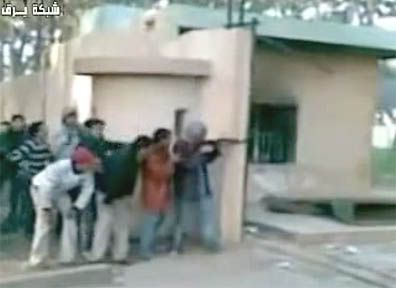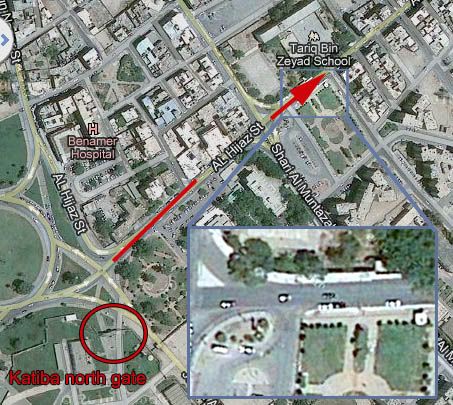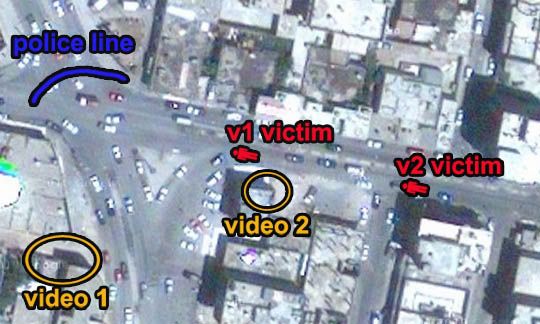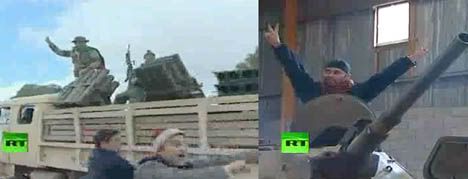March 16, 2025
(rough, incomplete)
As a 2023 Human Right Watch report put it, "Russia unleashed a full-scale invasion, bringing death and suffering to millions of Ukrainian civilians" with its invasion of Ukraine the previous year. Since then, it says, "Russian forces have killed, raped, tortured, deported, or forcibly transferred civilians to Russia or Russian-occupied areas."
In this article, we'll consider only the "killed" part, with an emphasis on civilians. I'm not as focused on injuries, important and terrible as they can be, but broadly speaking, the pattern I see (at least for civilians) is close to 2 injured for every fatality. So multiplying any deaths total by 3 should give you an idea of total casualties including wounded.
Following Russia's 2022 invasion, estimates of civilian deaths very widely between 12,600 (verified minimum from a recent OHCHR report) and, by tallying regional totals from Wikipedia, between 20,000 and 35,000, with Mariupol being the biggest variable (estimates there range from 10-20,000 in most sources, with over 25,000 killed per this list, citing other credible media reports).
Military losses, estimates, per https://en.wikipedia.org/wiki/Casualties_of_the_Russo-Ukrainian_War
Ukrainian Forces: 60,000-120,000 killed
Russian forces: 167,000-234,700 killed.
Peoples' Republics forces (Russian-supported separatists): 21,000-23,500
Total military deaths since 2022: 260,000-413,200
So comparing 12.6k-35k civilians to the above, we get a death ratio somewhere between 0.03 civilians for each militant (0.03:1 or 3:100) to 0.14 civilians per (0.14:1 / 14/100). As we'll see, either number is remarkably low by world standards.
Now let's consider the war's first phase, before Russia undeniably entered the field, the 2014-2019 "Anti-Terror Operation" in the Donbas and the 2015-2021"ceasefires" period following the Mink Accords (note the years of crossover)
Estimated total killed: 14,000-14,300
- 6,500 fighters of the Donetsk and Lugansk Peoples' Republics
- 4,400 Ukrainian fighters,
- 3,100-3,400 civilians
(3100-3400) civilian deaths vs. 10,900 military ones = 0.3 civilians for each militant. That's 2-10x as bad as during Russia's invasion. And as I'll explain below, that's probably >80% killed by Ukraine.
Some prior estimates of civ:mil death ratios in select conflicts, all of them outside Europe, suggests a global double-standard (citing https://en.wikipedia.org/wiki/Civilian_casualty_ratio):
US -> Korea 3:1
US -> Vietnam 2:1
US -> Iraq: 3:1 down to 0.5:1 (counts vary widely)
US -> Afghanistan: 0.4:1 (may be higher)
Israel -> Lebanon 1982: 4:1 or even 6:1
Gaza 2023-now: Probably at least 4:1 (counts vary widely)
Even Ukraine's brutal attacks on the Donbas (see below) yield a better rate than any of these, at 0.3 civilians for each militant, with the separatist side causing some of the deaths. Russia's invasion and Ukraine's response cuts the civilian deaths in half, to 0.14:1 or even lower. And even of this small number, Ukraine contributes much of it - and probably most of it, directly with ongoing shelling of the Donbass, and indirectly as in occupied Mariupol.
As I see it from middling study (on average - high in spots, low in others), there are 5 sets of circumstances allowing for some Ukrainian hand in killing civilians, even or especially where the Russians had invaded and were doing their own killing:
1) Russian-occupied Donbass, Crimea, etc.: ethnic Russian in Russian-occupied lands killed in Ukrainian shelling, bombing & missile attacks. See below for some highlights of the first 8 months of the "Anti-Terror Operation" in 2014. This eventually mellowed, but the same kind of scale returned in 2022.
2) Ukraine-occupied Donbass (occupied ethnic Russians, expendable in some minds = human shields, especially when the Russians are close to liberating an area) - est. 2,958 killed since 2022 in Donetsk oblast, both sides included, but excluding Mariupol and Volnovakha (Ukrainian occupied)
3) Mariupol (same as above but in a major, coastal, strategic city that served as the capitol of occupied Donetsk - Mariupol wound up flattened and massacred as a severe example - an area I studied in some detail: https://libyancivilwar.blogspot.com/2022/03/who-is-really-flattening-mariupol.html and should revisit, considering it may account for 10,000 to 25,000 or around 50-70% of all civilian deaths. Mainly, Ukraine weaponized the city to kill Russians, firing from every building, getting them wrecked in response, with little or even negative regard to civilian harm. My research suggests the Azov Brigade, not the Russians, blew up the drama theater on March 16, killing perhaps just a few dozen people they chose not to evacuate, for their own murky reasons, rather than the 1,200 widely reported. The very high counts might include this bigger number and might thus inflate the death toll there. Monitor on Massacre Marketing: Mariupol Theater Bombing, 3/16/2022
4) Bucha circumstances / parts of Kyiv Oblast were the 2nd deadliest after Donetsk, 1,569 civilians killed - occupied by Russia but partly sympathetic - massive violence used, killing innocents with heavy shelling, with likely execution of suspected collaborators after liberation -Many posts here: https://libyancivilwar.blogspot.com/search/label/Bucha%20Massacre - ignore all purple-shaded maps - another important issue to revisit. It was a mixed bag, with some definite Russian crimes, like executing 7 captive TDF fighters and the man sheltering them, and other brutality, if it often seems accidental.
5 The rest that was briefly occupied by Russia but I know less about (maybe like Bucha but varied, usually less severe?)
In Kyiv, there were only some 200 deaths total, probably most of these from missiles Ukraine shot down over the city to prevent another hit to their soldiers. This isn't a major factor, and it applies on the other side as well. One of the deadliest attack on Donetsk, on March 14, 2022, saw 23 civilians killed in a single, unusual attack with a Tochka-U missile and cluster bomblets, after it was shot down by DPR forces right over downtown, complicating the blame for what happened.
More Deaths on the Russian Side
"On 17 February 2023, the Ukrainian prosecutor general announced that at least 461 children had been killed since the start of the invasion, with a further 923 wounded.[153] Most of these child victims were from the Donetsk region.[153]"
"Russia does not allow monitoring in territories it controls, where civilian deaths are thought to be highest."
https://en.wikipedia.org/wiki/Casualties_of_the_Russo-Ukrainian_War
May 28, 2024: 282 children have been killed and 733 injured, just in the DPR, over the full 10 years of the conflict. It would be higher if many of children and young mothers had not been moved further back or even to Russia for their safety. (TASS)
Most civilian casualties - 85-90% - between 2014 and 2016 were from "indiscriminate shelling of residential areas," an OHCHR report found, but this is not broken down into deaths on each side.
From 2017-2020 OSCE found 2.4 shelling casualties (injured or killed) in the PRs for every one on the other side. (657 vs.270). Just Donetsk: 513 vs. 223. Just Lugansk: 144 vs. 47. (OSCE report) From 2018-2021 A UN study found FIVE shelling casualties in the PRs for each one on the other side. (310 vs. 62). (UN report) There's an argument that the OSCE routinely undercounted attacks and casualties, especially in the PRs, to the tune of about half of them missed. (Donbass Insider) That's supported by the above (2.4 vs. 5), and the UN numbers are preferrable. This means, barring false-flags and ignoring short-shot misfires by either side, Ukrainian forces killed 5 times as many civilians as the other side did.
Amnesty International, November 6, 2014
"The large majority of the [civilian] deaths were in separatist-held territory in Donetsk, and were likely caused by Ukrainian government forces, but separatist forces appeared responsible for several deaths in Avdiivka and Debaltseve, areas under government control. The organization’s research strongly suggests that separatist forces fired from these neighbourhoods, and Ukrainian government forces fired into them. In at least one instance, government forces placed an artillery position in a residential area."
Separatist weapon placement in residential areas was "strongly suggest[ed]" while Ukraine's was apparently proven and stated as a fact. And yet, there were few civilian casualties on the Ukrainian side, and far heavier ones on the other side. The Ukrainians kill so many civilians, it doesn't seem they even aimed for military targets to begin with. It could be all the talk of indiscriminate weapons with poor aim misses the main point that these hits were probably no accident, but rather intentional state-sponsored terrorism.
Otherwise, the record is least clear in 2014, when it was likely higher rate of deaths in the PRs than in later years, applied to a much higher death toll. Probably at least 6:1 on around 1,786 civilian deaths = at least 1,531 civilians killed by Ukraine vs. at most 255 by the Peoples' Republics, from April to December. Civilian deaths per year:
2014: 2,084 (1,786 + 298 on MH17)
2015: 955
2016: 112
2017: 117
2018-2021: 58, 27, 26, and 25, at the end mostly from unexploded ordinances. (UN report) especially in 2021 as the ceasefires was mainly held to, as it turns out, while Ukraine prepared to violate the Minsk accords with a publicly threatened reconquest of Crimea (March, 2021) and subsequent force buildup in the Donbas and then shelling of civilian homes and infrastructure, starting in November 21 and accelerating in January and February, before Russian forces finally entered the war for real, 8 years into it. (see here)
2014 Disputed Attacks (a few examples)
So 2014 is the big question regarding civilian casualties prior to Russia's invasion. Both sides blamed each other for everything that happened, and it was a lot. I can help us get some idea which side was lying.
June and July: Deadly Airstrikes
For the most part, the attacks used artillery shells, rockets and missiles fired from the ground. I often call all of this "shelling," and I think that's technically correct. But at first, Ukraine was more bold and used fighter jets only they had to attack civilian targets on the ground.A CNN investigation found clear evidence that the attack came from the air and the pattern of the craters suggested use of standard equipment on the Su-25, a ground-attack fighter, and the Su-27 – both combat aircraft operated by Ukraine.[185] Radio Liberty also concluded that "Despite Denials, All Evidence For Deadly Explosion Points To Kyiv".[188] CNN said that it was the first time that civilians had been killed in an attack by the Ukrainian air force during the 2014 pro-Russian unrest in the Donbas.[185] The next day, Luhansk People's Republic declared a three-day mourning in the city.[189]
More here at the ACLOS wiki I helped start. Note that one of those killed, here at the government's HQ, was the LPR's Minister of Agriculture, killed along with another woman she was talking with outside the building. One of the women (I'm not sure which) was seen alive in a terrifying aftermath video, her lower body shredded, pleading for someone to help find her phone so she could call someone.
A month later: BBC July 15 "Rockets struck the town of Snizhne in Donetsk region around 07:00 (04:00 GMT), hitting a block of flats and a tax office. The rebels blamed the attack on Ukraine's air force - a claim denied by Ukrainian sources. ... Ukrainian officials said 11 people had been killed and eight injured, including a child. Earlier, they had put the toll at four while rebels spoke of around 10 civilians being killed." When Ukraine denies and downplays at the same time, it's troubling.On September 5, a ceasefire was agreed. According to DPR officials, the ceasefire was violated by Ukraine many times, ten times in just one day, September 20, damaging homes and killing 4 civilians in the Peoples' Republics. (Sputnik Globe)
October 1 Rocket Attacks on School & City Bus
On October 1, the ceasefire was broken again with 10 killed in Donetsk, 4 at school on the first day of classes. and 6 in another hit on a city bus.
France 24: "A source in Donetsk city hall told AFP that the strike happened right after the school's 70 pupils lined up for an assembly to mark the first day of class -- held nationally on September 1 but pushed back by rebel authorities because of the conflict."
"The children were taken to the basement; they are still there," the source said.
The pro-Kiev regional government of Donetsk, which is now based in the government-controlled city of Mariupol, accused pro-Russian separatists of the self-declared "Donetsk People's Republic" of shelling the school.
"The Donetsk People's Republic used rocket launchers to shoot at a school... the shell exploded five metres away from the building," the regional administration said in a statement.
Six more people died when another shell struck a public minibus in Donetsk, the regional authorities said, making Wednesday's casualty figures the highest civilian death toll in a single day since a ceasefire was struck.
As it happens, I already checked this one, a couple years go, mainly the bus but also the school impact. The pro-Kyiv crowd cited the bus attack as evidence the separatists were to blame, for this if not everything. Reason: the rocket was fired from the southwest, not the northwest as usual. "For those not from #Donetsk: the projectile on Poligraficheskaya, which killed 8 people, came from the side of the city, not the airport (see diagram)." At least 2 others did their own analysis to similar effect - origin to the southwest. Tacit acknowledgement: other attacks HAVE come from the airport direction (NW).
I checked and the readings are correct enough, for the bus and the school. The bus rocket tube points SW, which most read as the direction. It might be, but these can bend on the final stop, just after the detonation, as this one might have. The splash pattern of fragmentation marks on the pavement is the best indicator. It's not totally visible, but the shape to me suggests an origin closer to due south. My red line below runs due south, which may be too literal. It could be a bit either way, more likely SW, or anywhere in the range marked by white lines. Lower right shows the approximate front line at the time.
The school damage wasn't as clear or easy to read, but especially so close to the damaged south facade, that shell to seemingly came from the south in almost the same way, but with less indication of SW, more likely due south (see post for details).
Smerch rockets used - If that means BM-30 (Wikipedia), it can fire different rockets with different ranges up to 100 and even 200km, and other models with shorter ranges, so it's hard for me to say. The front line is less than 20km to the SW, down to a Ukrainian-held are to the due south about 35-40km out and spanning to 60 km. 20-40km is needed, depending. so that could be a long-range, pretty normal or maybe even short-range use, depending on the exact rocket used.
"DPR deputy leader Andrei Purgin told Russian TV that Ukrainian rocket launchers had targeted residential areas from as far as 40km (25 miles) away." (BBC) It could be from the edge of that area about 40km due south. It could also be a closer attack from a more SW direction, or any distance after sneaking east behind enemy lines is entirely possible. And the DPR doing it is entirely possible. So this case is inconclusive, and it's the top example to suggest DPR/Russian false-flag terrorism in the first year (I found 3 people on Twitter pushing this one, no one pushing any others, at least in English).
But as I showed, a south or southwest angle is also not nearly as conclusive as these people made it seem. In fact, the next day, Human Rights Watch would use the same basic angle to prove it was Ukraine shelling Donetsk, now with cluster munitions.
November 5 Attack on Kids Playing Football
BBC November 5 "Two teenagers died and four were wounded when an artillery shell hit a school playing field as they played football in eastern Ukraine." A report of the OSCE special monitoring mission (SMM) heard It was at 3:30 pm that 2 artillery shells impacted at School No. 63 on Stepanenko Street in Donetsk, with one hitting the football field. A witness heard eight explosions. "According to him the first two occurred in quick succession. The other six occurred within five minutes of the first." "2 shells hit where children were playing at School No. 63 on Stepanenko Street, Donetsk," probably the first 2 quick hits. "The SMM saw human remains scattered around the pitch, including bone fragments, blood and internal organs. Blood-stained clothing was also visible, which appeared to have been torn by shrapnel."
Amnesty International declared: “Today’s shocking attack in Donetsk must by fully investigated. If it is found to constitute a war crime, those responsible must be brought to justice.”
Pro-Kyiv UNIAN would argue "Shell that hit school in Donetsk ‘fired from militant-controlled Makiivka’" Someone named Perebyinis (app. Yevhen Perebyinis, Deputy Foreign Minister of Ukraine) is cited saying "The shell that hit the school and killed [those] children in Donetsk was fired from territory controlled by the terrorists. We have photo evidence of it," he tweeted. "Perebyinis posted photos that he said proved that the militants were to blame for shelling the school. According to these photos, the shelling was carried out by insurgents from the occupied town of Makiivka, which is located to the east of Donetsk."
No photos are shown, just a satellite view with a red line pointing almost due east, and a wider map showing a range of possible directions from the east. "The red line on the Google map shown above indicates the shell trajectory, as calculated by analysts at the ukraine@war blog." (site apparently defunct now) A video explaining the point was attached, but is no longer present.
Update: found the tweet and linked page "Rocket that hit School No63 did not come from Peski." He doesn't seem to know what he's doing. "It is clear that the shell bent the fence and not the explosion, because the right part of the fence is not bent at all where the explosion hit." No, that's because this is the back direction where the force is directed down into the ground rather than up into the fence. (see below)
I found some photos of the field impact and tried my own best reading: impact near NW corner, right at the north fence, blasting a narrow, deep crater there, tearing the fence up to the east (and up = forward), with curling inward = force from the west, near parallel with fence but a bit from the outside (north) - scorching from the ignition fireball spreads east (= forward on trajectory) - low frag marks appear a ways back, stop on a line running SW, and behind that the turf peels back with even lower force (and low = back). All this says arrival from northwest, not the east. I use the orange arc differently here, to include the low marks on the side and scorching ahead, as the splash pattern behind seems interrupted by the concrete and fence pole, winds up peeling turf instead. It is a bit hard to read, perhaps giving Perebyinis some excuse to read it almost backwards.
"The SMM also noted a crater in the playground, near the eastern wall" besides "three craters near a damaged apartment building," and "three other craters on nearby Myrhorodska Street. The SMM observed damage to a number of houses near these craters."
"All craters seen by the SMM were about one metre in diameter and the depths varied. The SMM’s analysis indicates that at least four of the craters were caused by 120mm mortar shells and two others were the result of 122mm artillery rounds." Probably the 2 bigger shells were used to kill the kids playing soccer.
"In the SMM’s assessment, all of these were fired from a location north-west of the football pitch and were the result of high-angle fire." High angle, I think, means relatively short range. That would make for an extra vertical impact, which I think fits the damage.
"At 09:25, the shelling obliged the SMM to leave the area. The SMM heard loud explosions about two kilometres away to the south-west."
Conclusion
A November 14 speech by President Poroshenko might have referred to these repeated school attacks when he assured people in Odessa they took the right path in rejecting the "terrorism." because "Our children will go to kindergartens and schools, theirs will be sitting in cellars. [bomb shelters] Because they can't do anything! That’s how we are going to win this war." When their whole lives are disrupted Ukraine wins. Suffering is the goal? Or is it when the "terrorists" finally die or flee to Russia, leaving the land to Ukraine? It also helps to win that they don't have to take credit for imposing this life on their enemies; according to the post-2014 weapon-state of Ukraine, the kids in Donbas were hiding exclusively from Russian or separatist fire, as a civilized state like Ukrainian would never do such a thing as target innocent civilians, even if they were "Russian terrorists."
.png)
.png)
.png)
.png)
.png)



.png)




